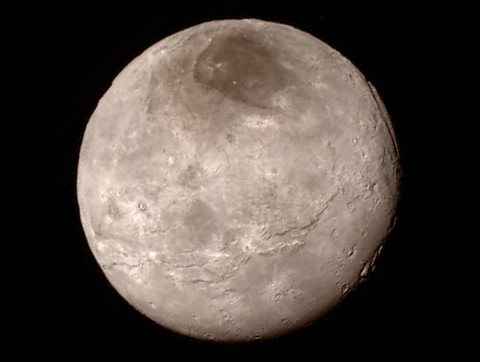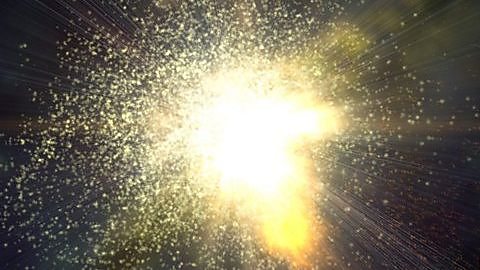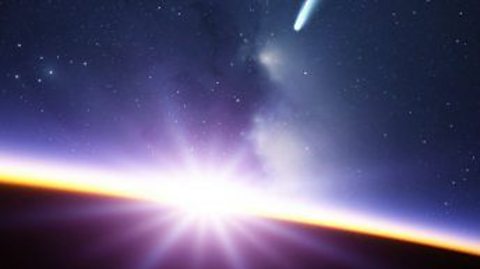
A dwarf planet with remarkable secrets
Pluto is too far away from Earth to be seen with the naked eye.
If you stood on Pluto's surface, the Sun would merely appear to be a very bright star. Although previous images showed that something was happening on Pluto, with an average temperature of -240C, many people assumed it was a cold and relatively dead world.
That was until NASA's 'New Horizons' probe arrived in 2015 and transformed our understanding of this distant, enigmatic body. Here are the five most surprising things discovered by the deep-space instrument.

Icy mountains
After almost a decade in space, the New Horizons probe's close encounter with Pluto lasted just six days as it hurtled past at nearly 50,000 kilometres an hour.
I was lucky enough to witness, first-hand, the first images sent back to Earth.
Immediately we were struck by the incredible number of features on the surface. Far from being flat and boring, Pluto seemed to be full of mountains, plains and maybe even "snow".
By measuring the size of the shadows, we could estimate the height of these peaks at over 4,000m (13,000ft) – the height of the American Rocky Mountains. The bright patches might be blankets of frozen nitrogen, or even nitrogen glaciers.
Chris shares the excitement as the first images of Pluto arrive. The Sky at Night (91Čȱ¬ Four, 2015)
Spectacular colours
Before New Horizons, the best images of Pluto revealed nothing more than a few light and dark patches.
The best Hubble Telescope images were only 150 pixels across. The new pictures show much more detail. When manipulated, they reveal a wealth of scientific information.

Image caption, Pointing the famous Hubble Space Telescope directly at Pluto in 1994 gave us this pixelated effort.
1 of 5

Giant canyons and nitrogen rain
The last thing, perhaps, astronomers expected to find was a six-mile deep canyon at the edge of the Solar System. But on Charon, Pluto's nearest moon, they found this most familiar of geological features.
There was more, on Pluto itself, that recalled the American mid-west. Dark streaks on Pluto's plains hinted at winds moving across the surface.
Scientists who examined the images from New Horizons identified a daily weather cycle similar to Earth's. But instead of surface water being evaporated by the Sun and falling as rain, Pluto experiences a daily nitrogen cycle. Nitrogen is heated and cooled as Pluto rotates.

CLICKABLE: A unique lunar relationship
A New Horizons image of Pluto and its moon Charon revealed more surprises about the dwarf planet and its orbiting moon.
Click on the hand to see why Pluto and its moon have shaken things up.
Rumbles from the deep
New Horizons' biggest surprise was that Pluto shows signs of still being geologically active. Some unseen process or processes are renewing the surface of the dwarf planet.
This has been likened to a lava lamp or pot of porridge; heating from underneath drives convective cycles, which pushes new material to the surface.
The heat might be coming from a hidden ocean or radioactive elements beneath Pluto's surface. This would be a real turn-up for the books as, until now, astronomers thought Pluto was too old to have retained enough heat energy to have these processes occurring. It might mean all sorts of bodies - those considered dead, distant and cold - may actually be teeming with hidden activity.
Chris discusses Pluto's surface and learns there's nothing more exciting than a confused scientist. The Sky at Night (91Čȱ¬ Four, 2015)
Learn more about this topic:
How will the Universe end? document
Dr Aravind Vijayaraghavan reveals how the second law of thermodynamics explains the rise and fall of all things, including the Universe itself.

How do we know the Big Bang actually happened? document
Most scientists think that everything that we know and experience began with the Big Bang, 14 billion years ago. But how can we have any clue about something that supposedly happened so long ago?

Did comets kick start life on Earth? document
Life, as we know it, cannot exist without water and organic molecules – the building blocks for all living creatures. Find out if comets brought these to Earth.
